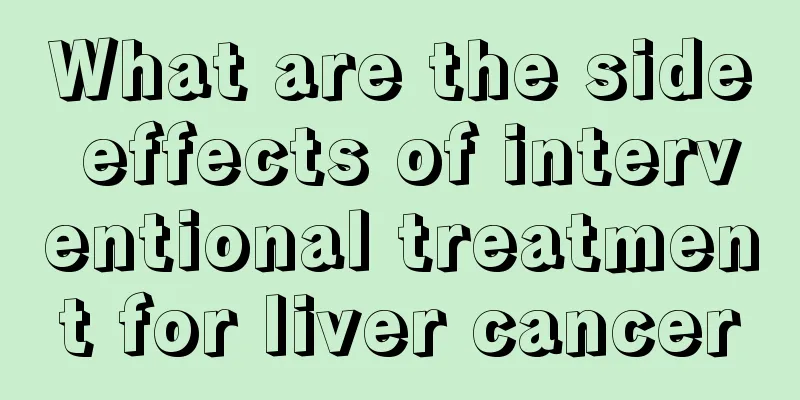What are the side effects of interventional treatment for liver cancer

|
Interventional treatment of liver cancer is a way to treat liver cancer. However, while this method can achieve certain therapeutic effects, its side effects cannot be ignored. Moreover, this treatment method is difficult to operate, has obvious side effects, and can also cause damage to normal liver cells. 1. Disadvantages of interventional treatment: 1. Liver cancer's main blood supply depends on the hepatic artery, but the cancer mass is surrounded by the portal vein, so cancer cells can "survive in peace". 2. The operation is somewhat difficult. The catheter should be selectively inserted into the blood supply artery for best results, but sometimes it is difficult to enter the hepatic artery. Some liver cancers may have multiple blood vessels supplying blood. 3. Despite super-selective access, there are still obvious side effects. According to the data analysis of our hospital, the most common reactions are in the gastrointestinal tract. 4. Patients with portal vein cancer thrombus should consider removing the cancer thrombus as appropriate. 5. Even if the superselective operation is carried out smoothly, due to reasons such as high-pressure injection, it may cause accidental embolism, shunting and inevitable micro-metastasis. 6. Normal liver cells are still damaged, and a few patients even suffer from liver dysfunction. 7. The therapeutic effect is not satisfactory for patients with large cancer masses. 8. Some patients’ blood vessels are blocked after one treatment, making further operations difficult. Second, the advantages of interventional treatment: 1. The therapeutic effect is definite. Those who are successfully treated can see a rapid decrease in AFP, reduction in tumor size, and relief of pain. 2. Scientific mechanism: The local drug concentration of interventional therapy is dozens of times higher than that of systemic chemotherapy, and it blocks the blood supply to the tumor. Therefore, the two-pronged approach has good efficacy and less toxicity than systemic chemotherapy. 3. Simple and easy operation, safe and reliable. 4. The elderly, weak and those with certain diseases can also undergo the procedure without general anesthesia and they just need to stay awake. 5. The cost is relatively low. 6. It can be repeated, and the diagnostic imaging is clear and easy to compare. 7. For some liver cancers, the size can be reduced and then resected in two steps. 8. It can be used as one of the important means of comprehensive treatment of advanced tumors. |
<<: Is liver cancer contagious?
>>: Insomnia, headaches, colds...all can be cured, why not soak your feet now!
Recommend
Is colon cancer metastasized to the lungs contagious?
Due to irregular lifestyles, environmental pollut...
Can eating the placenta enhance sexual performance?
The placenta is actually the organ that exchanges...
Is nebulization good for nasopharyngeal cancer? What should I pay attention to in my diet?
Nowadays, many patients are concerned about the c...
What's the matter with moles on the body and face
What's the matter with moles on the face and ...
Four detailed features of TCM treatment of skin cancer
The incidence of skin cancer in our country is ve...
What are the foods that can protect against radiation
Food is very common to us. There are many kinds o...
What should I do if I have herpes on my stomach? Treatment of shingles
Herpes on the abdomen is also a common type of sh...
Why is chicken red
Many people are very confused about why chicken l...
What is the order of administration of targeted drugs and chemotherapy drugs for breast cancer
The treatment sequence of breast cancer should be...
The benefits of sweating during exercise on the skin
Exercise is an excellent way to maintain health. ...
How to clean taro juice
When washing clothes, if there are a lot of oil s...
Are negative ion pads good for gynecological inflammation?
Women often have to use sanitary pads when they h...
How to quickly lower alanine aminotransferase
Excessively high alanine aminotransferase levels ...
What to do with the red marks left by getting angry
When you have a sore throat, you always feel your...
What should I do if my front teeth fall out?
In fact, in life, many people may lose their fron...









